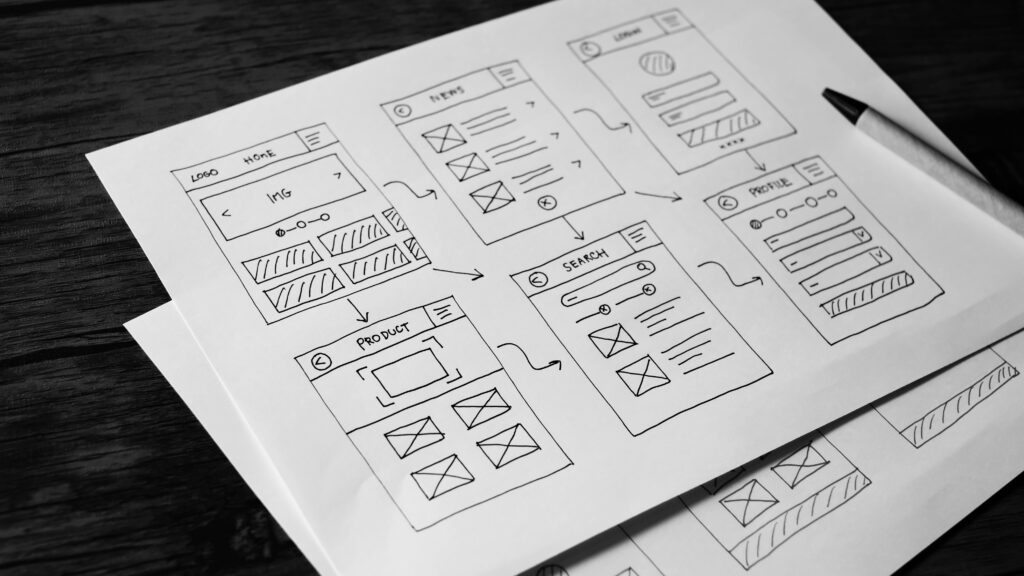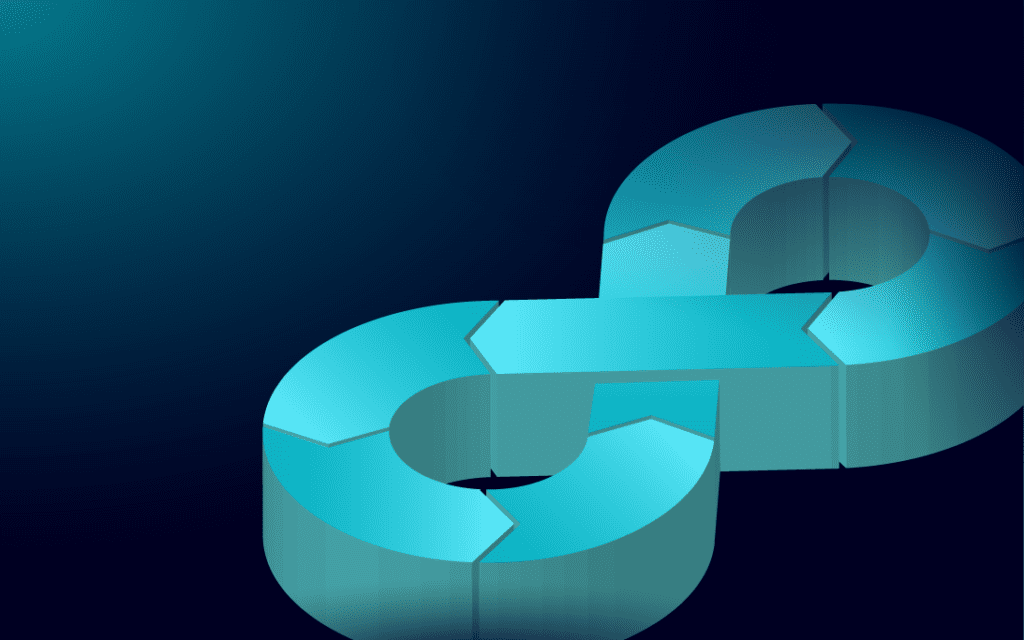The global marketplace is a crowded, noisy place. There’s lots to choose from and competition at every turn. If you’re going to succeed in all the chaos, you’ve got to build products that stand out. Yet, sometimes companies get so focused on developing a functional product that product design becomes more of an afterthought instead of a critical part of the product development process.
5 Design Principles From The World’s Most Product-Centric Companies
The fact of the matter is this: Products that look better, sell better. Product design is crucial for success, and it needs a place on your product roadmap. But don’t think you can sneak it in at the last stage of product development. Great product teams involve product design early on in the process to seamlessly incorporate aesthetics, usability, manufacturing—even long-term business goals.
“Designers aren’t just people who put a skin on things and make them pretty,” says Chris Leckie, Product Design Director at FanDuel. “They need to take an idea and put form around it, and then create an experience that is incredibly simple, even though some of these things are inherently complex. You need to ensure that you’re actually able to solve the problem.” Read more of this fantastic interview with Chris Leckie.
Good product design marries form and function. It simplifies by stripping away what’s unnecessary. Really good product design goes above and beyond what’s expected by delivering meaning. It has the power to balance branding with a buyer’s sense of self. It incites emotions. There’s no better example than the smartphone. Think about it: There are many smartphones on the market to choose from—some cheaper than others. But it’s the iPhone that just might be one of the most recognizable product designs on the planet today. Jony Ive is the man behind that little design wonder.
Tweet This:
“Product managers can’t afford to let product design be an afterthought.”
You can’t afford to let your product design be an afterthought. To be successful, product managers need to be design thinkers. Here are five design principles straight from innovative design leaders that you should keep in mind as you build your product roadmap.
Principle 1: Less, but Better
If you haven’t heard of Dieter Rams, you’re in for a treat. In 1955, Dieter Rams was recruited to Braun as an architect and interior designer, then served as chief design officer from 1961 to 1995. Rams introduced the concept of sustainable development and produced products that were “remarkable in their austere, aesthetic, and user friendliness. Mr. Rams made Braun a household name in the 1950s.” He continually asked himself “Is my design good design?” and this question is what product managers and designers should ask themselves as well. To get to the heart of the answer, consider Rams’ 10 principles for good design.
According to Rams, good design:
- Is innovative
- Makes a product useful
- Is aesthetic
- Makes a product understandable
- Is unobtrusive
- Is honest
- Is long-lasting
- Is thorough down to the last detail
- Is environmentally friendly
- Involves as little design as possible
Perhaps the most celebrated principle of Dieter Rams is less, but better. In other words, simplicity and clarity lead to good design.
Principle 2: Blow People’s Minds
Julie Zhuo, product design VP at Facebook, has a design philosophy that was, in part, shaped by a Sony Walkman.
Zhuo’s uncle once gave her a gift of a chartreuse Sony Walkman, and it blew her mind. It was no ordinary Walkman—it was a Walkman from Japan. She writes, “It was the most magnificent thing I’ve ever owned, and not just because it played my recorded-from-the-radio mix tapes. Its every detail was, in my mind, flawless.”
She continues: “There have been many, many objects in my life that I have appreciated. That have done what I’ve hoped they would do, that have saved me time and made me pause in admiration for their beauty. There are few that have completely blown me away because they were so far and away better than anything I could have imagined.”
Tweet This:
“Great product design should strive to go beyond the minimum and deliver more than what’s expected.”
What made that chartreuse Sony Walkman so magnificent is that it went beyond her expectations, and blew her away. Product design should, at a minimum, meet the expectations of function. But great product design should strive to go beyond the minimum and deliver more than what’s expected. It should deliver an experience. It should aim to blow our minds.
Principle 3: Don’t Cause Unnecessary Harm
Patagonia, the outdoor clothing and equipment company headquartered in Ventura, California, has been a pioneer in sustainability since it was founded in 1973. Patagonia’s founder, Yvon Chouinard, is also an avid rock climber, surfer, falconer, and kayaker, among other things, so it’s really no wonder that environmental impact plays a huge role in the company’s operations—including product design.
Patagonia’s product design philosophy, one of eight core company values, is summarized as follows: “The raison d’être of Patagonia is to make the best product, which is the cornerstone of the business philosophy. Patagonia defines ‘the best’ as products that are functional, multifunctional (‘why buy two pieces of gear when one will do the work of both?’), durable, well fitted, simple, easy to care for, authentic and thoroughly tested, and that provide added value and don’t cause unnecessary harm.”
Not causing unnecessary harm is a driving force for all things Patagonia. Here’s a snippet from the Patagonia’s mission statement that succinctly summarizes its vision:
“For us at Patagonia, a love of wild and beautiful places demands participation in the fight to save them, and to help reverse the steep decline in the overall environmental health of our planet… We know that our business activity — from lighting stores to dyeing shirts — creates pollution as a by-product. So we work steadily to reduce those harms. We use recycled polyester in many of our clothes and only organic, rather than pesticide-intensive, cotton.”
Key questions that fuel Patagonia’s decision-making are “How can we do better for the environment?”, “How can we make existing products better?”, and “How can we reduce our negative impact?”. These questions are never far from the work of Eric Rice, a designer at Patagonia for almost two decades, who stays passionate in his role by seeking out answers while fleshing out new product designs and testing products on the trail.
The company recently launched its Clean Colors Collection, which uses natural dying techniques and dyes from California-based Swisstex. Sources for these natural dyes include mulberry, prickly pear, pomegranate, citrus peels, palmetto leaves, and other naturally occurring substances.
Inactivity has never been part of Patagonia’s DNA. “Since our main reason for being in business is to work on changing the way governments and corporations ignore our environmental crisis, action is absolutely necessary,” says company founder Chouinard.
Principle 4: Let Function Inform Design
Sonos, based in Santa Barbara, California, is a consumer electronics company best known for its smart speakers. It’s goal: to stream all the music on Earth wirelessly in any room.
Music obviously plays an important role in the company’s design process. When Sonos paired up with Lindsay Pincus, an interior designer with Homepolish, this shared inspiration was obvious. “It’s clearly become cool again to have your speakers proudly on display, rather than hidden in the walls or a built-in,” says Pincus.
Function informing design is routine at Sonos, as evidenced by the recent release of the Playbase, Sonos’s wireless home theater speaker that doubles as a TV stand. “In studying the way that people live and interact with entertainment technology at home, the company discovered a fact that seemed to undermine its own approach: Most people—a full 70%, by Sonos’s count—do not mount their television sets on the wall, preferring to sit them on top of a piece of furniture instead.”
As for product development and design, Fiede Schillmoeller, Sonos’ director of PR and culture, describes the collaborative nature of creating new products: “When we start developing new products, the user experience, the hardware, software and customer support teams are all around one table. They start building the first ideas, then prototypes, then they start testing and go back and say ‘This doesn’t work the way the customer expected it to work,’ they go back, they adjust. That way you develop products in a much more customer-centric way.”
Principle 5: Design Local, Think Global
Because the marketplace is global, product design needs to wrestle with designing for internationalization. This is more than simply changing the spelling of words from U.S. English to British English. John Saito, UX writer at Dropbox, writes, “Because many apps are only designed with English in mind, some design details can get lost in translation if you’re not careful.”
Saito shares his thoughts on effective internationalization and offers seven tips to keep in mind as you move through the process. Here’s the basic list:
- Leave room for longer translations
- Avoid putting text in narrow columns
- Don’t embed text in images
- Don’t create sentences with UI elements
- Watch out for metaphors
- Use descriptive feature names
- Provide alternates for translation
Saito also reminds us that product design is all about making better products for people. “By spreading the word about internationalization, I’m hoping we can all do our part to build better products for people around the world,” he writes.
Tweet This:
“Product design is all about making better products for people.”
By the way, Saito’s tips generated some seriously helpful comments from readers. Take the time to read through the conversations if internationalization is a topic that’s on your radar.
Read more insights from the Dropbox design team.
Take Away: Make Product Design a Priority
You can’t afford to let product design be an afterthought. Make it a priority on your roadmap.
Product roadmap software enables you to communicate a product’s strategy and product principles—including product design initiatives—to multiple constituencies across the company. With a tool like ProductPlan, you can create and share live roadmaps with just a few clicks, quickly update your roadmap in real time as decisions are made, introduce a consistent roadmap process across teams and use it to develop a solid product design strategy.
Here are a few ways to leverage ProductPlan for design-centered roadmaps:
- Leverage the Planning Board feature to help prioritize product design initiatives well before the slapping-design-on-at-the-last-moment stage.
- Create a Swimlane focused entirely on product design to enable planning that strategically synthesizes aesthetics, usability, manufacturing and business goals in your product design.
Product design will never again be an afterthought with powerful tools like these. Where does product design enter into the product development conversation for you?
To learn more about tools experts use in product design teams, watch our recent webinar:


